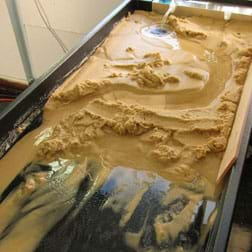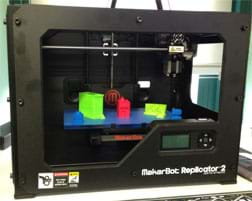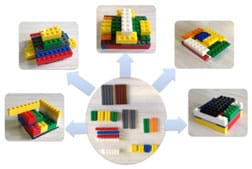Materials List:
Erosion in Rivers
 https://www.teachengineering.org/activities/view/nyu_erosion_activity1
https://www.teachengineering.org/activities/view/nyu_erosion_activity1
This activity was designed for classrooms with access to a 3D-printer and an erosion table. However, if either tool is unavailable, instructions are provided for alternative materials.
The class needs:
- simulation of river flow, via an erosion table with hydraulic bench OR a stream table OR a homemade erosion table; see below for details on these options
- small-size model buildings, one per student, made via 3D printer (plus computer and free drawing software) OR LEGO pieces; see below for details on these options
- 10 pounds fine sand ($5)
- water, sink and buckets
- Erosion in Rivers Pre-Activity Quiz, one per student
- Erosion in Rivers Post-Activity Quiz, one per student
River Simulation Options 
- Erosion table with hydraulic bench for academic purposes, such as the Hydro-Geology Stream table – Hubbard (product #Z06394M) for $1,330 from Nasco at https://www.enasco.com/p/Z06394M; the recommended table dimensions are 26-in wide x 66-in long x 6-in deep; the author performed the activity using this erosion table, shown in Figure 1.
- Alternatively, use a stream table, such as the Stream Table Kit (product #SB01704M) for $80 at Nasco at https://www.enasco.com/p/SB01704M; its heavy plastic tray is 14-in wide x 48-in long x 3-in deep with a drain hole.
- Alternatively, create a homemade erosion table; although a bit more work, it is an efficient low-cost alternative that can be created for ~$41 using the following supplies:
- a large plastic box of similar dimensions to the erosion and stream tables; manually create a drain (hole) on one end; estimated cost $12
- bucket or pan, to collect the water; estimated cost $5
- filter, such as a piece of cheesecloth, to keep soil from escaping the pan; estimated cost $4
- a pump, with velocity or flow meter if possible, so students can observe differences in erosion effects due to flow rate changes; estimated cost $20
Model Buildings Options 
- 3D printer, for example, the many models made by MakerBot Industries such as the MakerBot Replicator 2 (Figure 2; $2,000) or MakerBot Replicator Mini Compact ($1,375) at https://store.makerbot.com/; the author used an earlier version of these 3D printers, the Thing-o-matic by Makerbot (http://www.makerbot.com/support/thingomatic/); using any 3D printer also requires the use of computers and software, such as:
- computer, one per student; alternatively, small groups of up to three students could work together on one computer so fewer computers are needed
- 3D modeling drawing application, for designing building units, such as Google Sketch Up (www.sketchup.com; free) or 3D Tin (www.3dtin.com; free); helpful tips, tutorials and download information are available at http://makezine.com/2013/03/28/free-alternatives-to-tinkercad/
- For design ideas and downloadable designs, use http://www.thingiverse.com/; suggested designs include http://www.thingiverse.com/thing:151430 and http://www.thingiverse.com/thing:150956
- a supply of the filament material the 3D printer uses to make the building models

Figure 3. Using the same LEGO pieces, students create their own model buildings.
- Alternatively, give each student an identical set of 20-25 LEGO pieces (estimated cost $3), from which they can make their own unique model buildings (Figure 3); available for purchase at http://shop.lego.com/en-US/Pick-A-Brick-ByTheme;%20http://creative.lego.com/en-us/default.aspx; a suggested mix of typical LEGO pieces for a set of 19 includes the following pieces:
- (2) 2 x 6 (one thickness)
- (2) 4 x 8 (one thickness)
- (2) 2 x 8 (one thickness)
- (4) 2 x 3 (double thickness)
- (1) 2 x 6 (double thickness)
- (4) 1 x 8 (double thickness)
- (4) 2 x 8 (double thickness)
 https://www.teachengineering.org/activities/view/nyu_erosion_activity1
https://www.teachengineering.org/activities/view/nyu_erosion_activity1